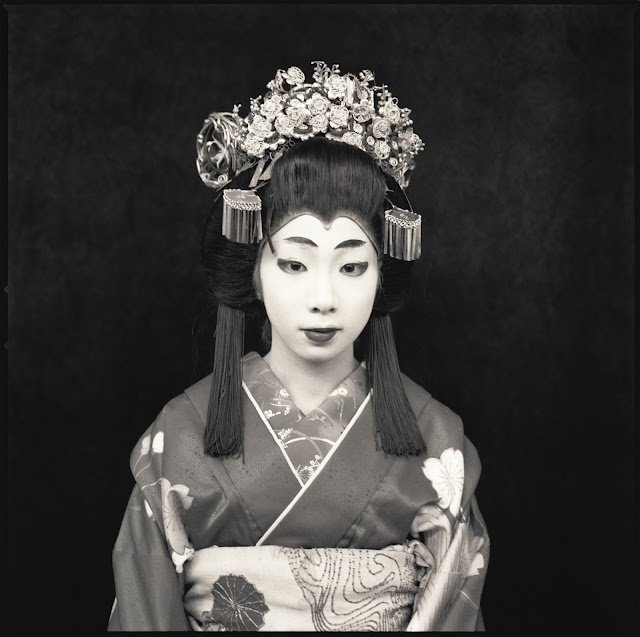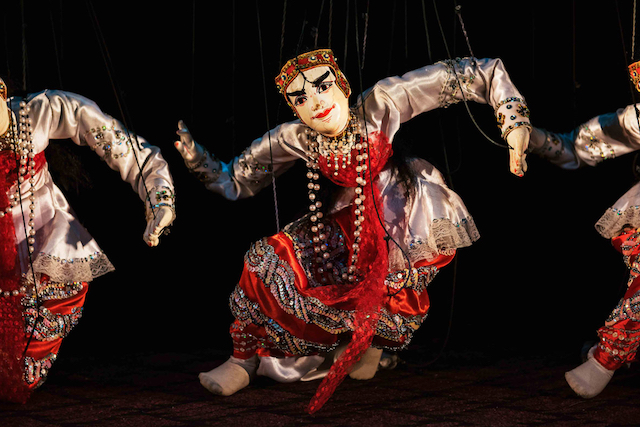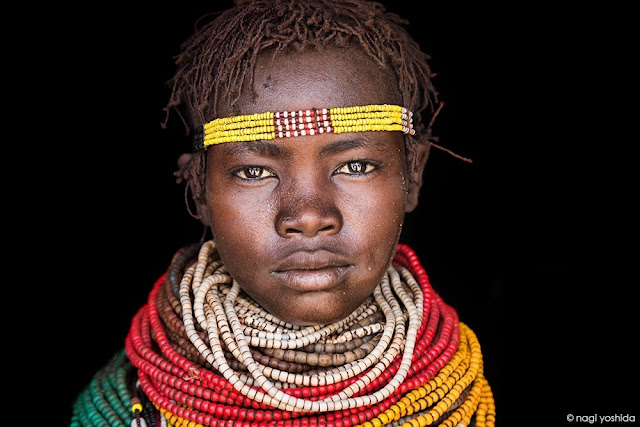Hiroshi Watanabe | Kabuki Players
 |
| Photo � Hiroshi Watanabe - All Rights Reserved |
This art form was created by a woman named Okuni, a shrine attendant, in the 17th century. Although greatly influenced by the aristocratic noh, kabuki was devised as a popular entertainment for the masses. A large part of the popularity of the early, all-female performances was due to their sensual nature. These performers were also prostitutes and male audiences often got out of control. As a result, women were banned from performing by the Tokugawa Shogunate, and only older males were allowed to take part in kabuki.
Hiroshi Watanabe, a Japanese photographer, features a wonderful gallery of square format portraits of non-professional kabuki performers in the small town of Nakatsugawa; located midway between Tokyo and Kyoto. He tells us that these perfromers do not get paid for their acting in the kabuki plays and have to dig deep into their pockets to pay for the intricate makeup, costumes and stage backdrops.
We also learn that the small town wasn't large enough to attract the itinerant kabuki troupes, so the town elders decided to have its own kabuki theater, hire the actors, make up artists and stage people. It became the town's tradition since the Edo period.
Hiroshi Watanabe was born in Sapporo, Japan and graduated from the Department of Photography of Nihon University in 1975. He moved to Los Angeles working in Japanese television commercials and later obtained an MBA from the UCLA Anderson Business School in 1993. Subsequently, he started to travel worldwide, extensively photographing and since 2000, has worked full-time at photography.
He produced five self-published books, then published I See Angels Every Day, monochrome portraits of patients and scenes from San L�zaro psychiatric hospital in Quito, Ecuador. This work won Japan�s 2007 Photo City Sagamihara Award for professional photographers. He won many awards for his monographs and books, and was invited to join a group of artists to photograph Venice for a project raising funds for that city.
He produced five self-published books, then published I See Angels Every Day, monochrome portraits of patients and scenes from San L�zaro psychiatric hospital in Quito, Ecuador. This work won Japan�s 2007 Photo City Sagamihara Award for professional photographers. He won many awards for his monographs and books, and was invited to join a group of artists to photograph Venice for a project raising funds for that city.


Comments
Post a Comment